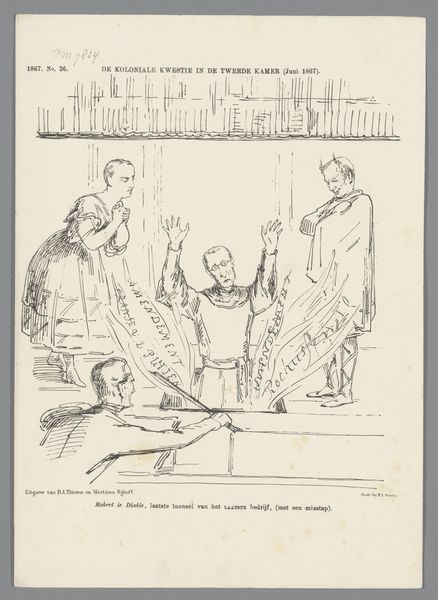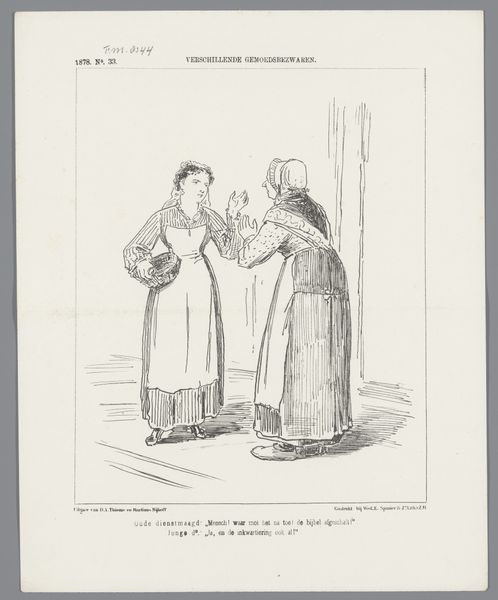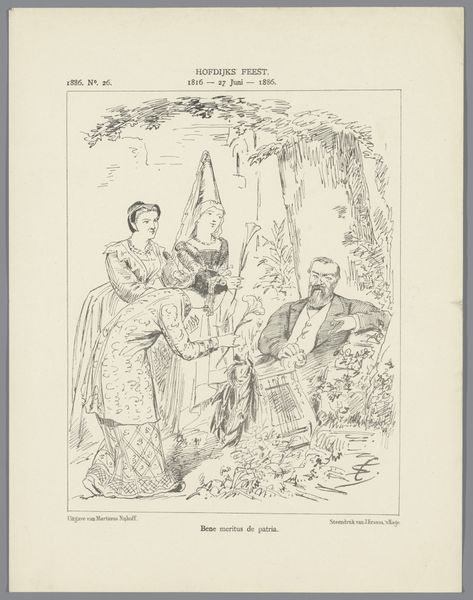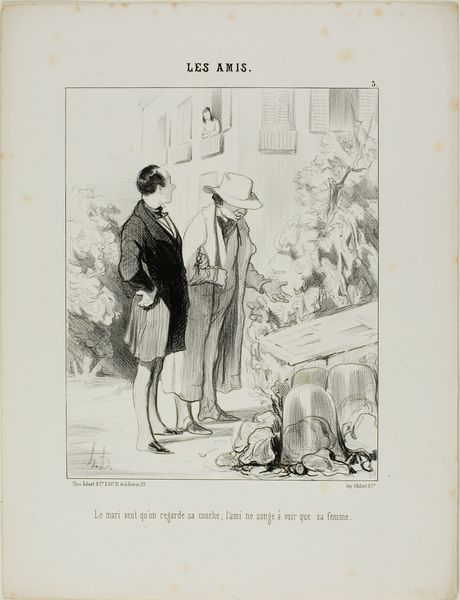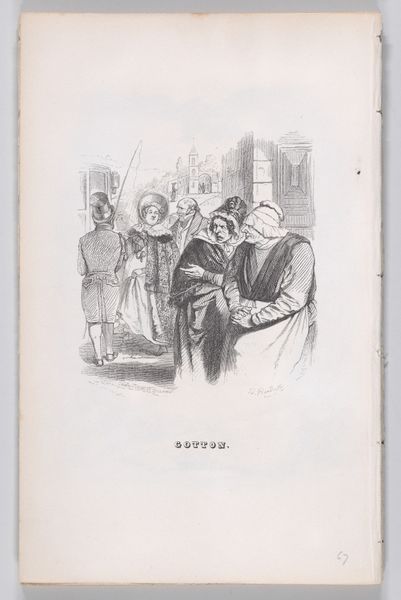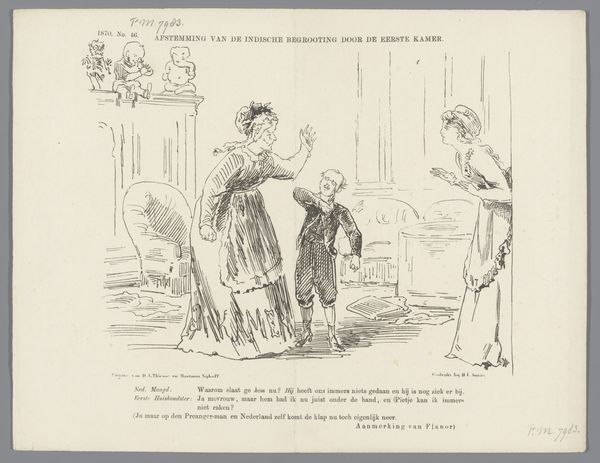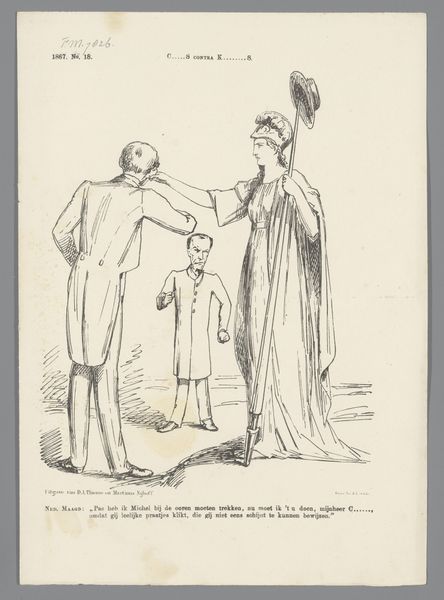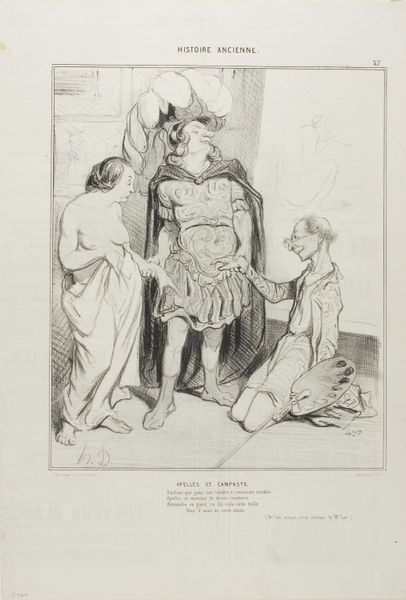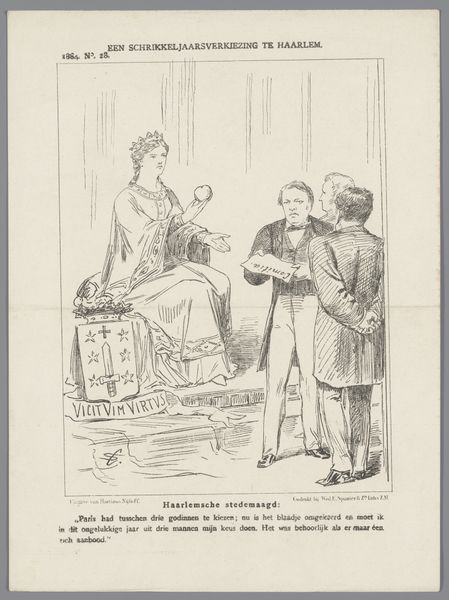
drawing, print, pen
#
drawing
#
comic strip sketch
# print
#
caricature
#
comic
#
pen
Dimensions: height 275 mm, width 215 mm
Copyright: Rijks Museum: Open Domain
Editor: We're looking at a pen drawing titled "Spotprent op de verkiezingen te Delft, 1883," which translates to "Cartoon of the Delft Elections, 1883," by Johan Michaël Schmidt Crans. It definitely has a satirical vibe to it. What's your interpretation? Curator: This image clearly comments on the political climate of Delft in 1883. It depicts what appears to be leaders of Dutch Calvinists being, as the inscription says, “seduced by Rome.” How do you see that "seduction" playing out visually? Editor: Well, the Calvinist figures, though small, seem to be almost worshipping at an altar tended by a much larger, looming figure... perhaps a Catholic priest? Is it implying that Calvinists are abandoning their principles? Curator: Precisely. The context of the late 19th century is key. There was considerable tension between different religious and political factions in the Netherlands, and this drawing taps directly into those anxieties. The 'election in Prinsestad' likely alludes to local political struggles amplified by these larger religious and ideological clashes. Consider how such a print might function within the public sphere – a sharp, visually arresting critique circulated among a specific readership. Do you think it was successful as political commentary? Editor: It’s provocative. I can imagine this ruffled some feathers at the time, especially given the sharp contrast between the small Calvinist figures and the imposing, central "Roman" presence. Curator: Exactly. The visual scale emphasizes the perceived threat to Calvinist principles. It is important to consider what it meant for these views to circulate so publicly and contribute to forming the public view of Calvinists during this period. The effectiveness lies, in part, in how it capitalized on the societal anxieties surrounding religious and political power. Editor: I never thought of art as a way to get that information, I found this interesting. I definitely see the historical context much more clearly now. Curator: And hopefully, you now understand how political cartoons actively shaped social and political narratives in the past, giving shape to those anxieties through accessible imagery.
Comments
No comments
Be the first to comment and join the conversation on the ultimate creative platform.

